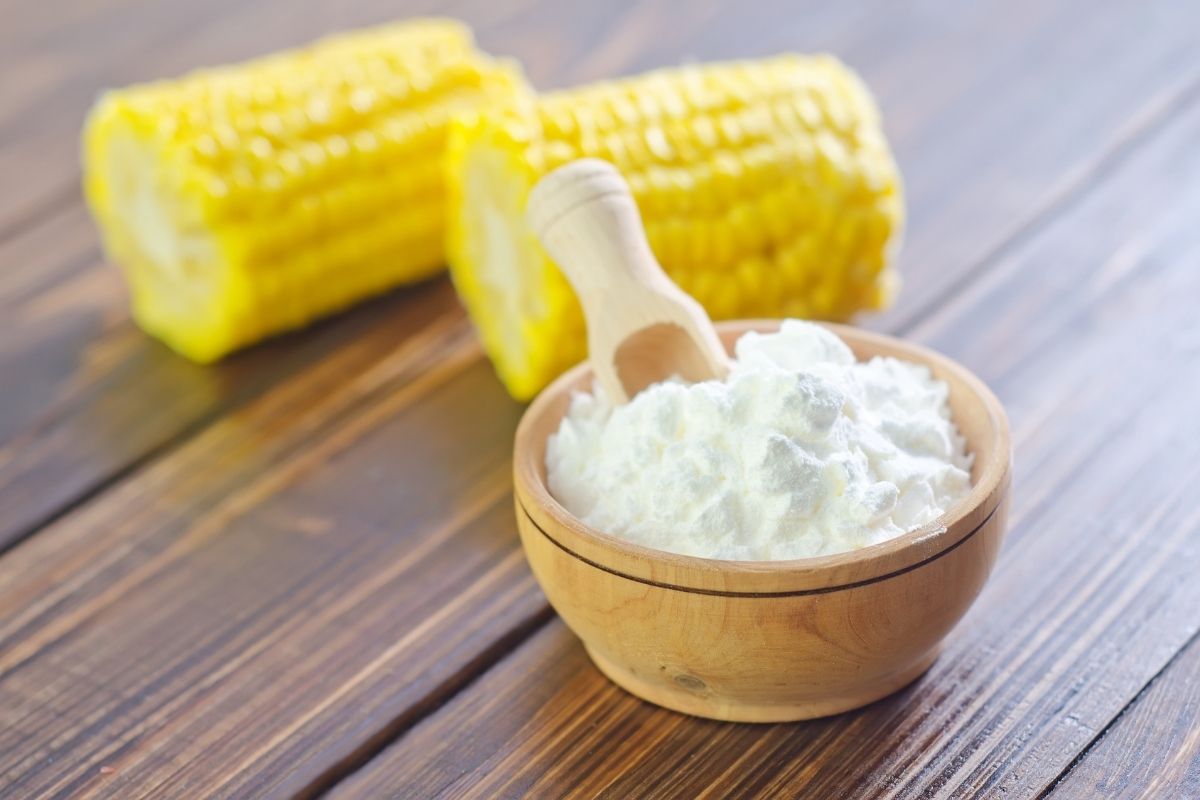Both cornflour and cornstarch are popular ingredients in many kitchens around the world. Their unique properties make them indispensable in a variety of dishes. However, the subtle differences between the two can sometimes cause confusion. Let’s embark on a journey to demystify these two pantry staples.
The humble origins of these corn derivatives trace back to ancient civilizations, where native populations utilized every part of the corn plant. The art of refining corn into flour or starch has been refined over millennia.
As trade and exploration spread the cultivation of corn globally, different cultures began adopting and adapting its use. It’s fascinating to note how the same corn can produce variants that become culinary staples across continents.
Today, with the boom of culinary experimentation and global fusion dishes, understanding the nuances of ingredients like cornflour and cornstarch is more crucial than ever.
Section 1: What is Cornflour?
Cornflour, as its name suggests, is a finely milled powder obtained from the whole corn kernel. It retains a pale, yellowish hue and possesses a slightly nutty flavor due to the presence of the whole kernel, including the germ.
Its texture is similar to that of other flours and is often used to produce a delicate crumb in baked goods. Think of it as the backbone for some of your favorite pastries or as a base for smooth sauces.
Recipes ranging from tortillas, muffins, or even as a replacement for wheat flour in gluten-free recipes often feature cornflour. Its versatility shines in both savory and sweet applications.
Section 2: What is Cornstarch?
Cornstarch, a white, powdery substance, is derived exclusively from the endosperm of the corn kernel. The process involves soaking and fermenting the corn, separating the outer materials, and then drying and milling the endosperm into a fine powder.
Its primary culinary role is as a thickening agent. Whether it’s a glossy sauce, a pie filling, or a dense custard, cornstarch is often the hero behind the scenes, ensuring the right consistency.
When working with cornstarch, it’s important to note its behavior under different conditions. For instance, mixing it with cold water before incorporating it into hot dishes prevents clumping. Plus, it’s a staple in many Asian dishes, providing that signature glossy finish to sauces.
Section 3: Key Differences:
While both derived from corn, the major difference lies in the part of the kernel they’re sourced from. Cornflour involves the whole kernel, whereas cornstarch focuses on the endosperm. This results in variances in color, flavor, and nutritional content.
When it comes to cooking, cornstarch’s thickening abilities are often more potent than cornflour. This means you might need to adjust quantities depending on which you’re using. Additionally, cornflour can lend a mild corn flavor, which can be desirable in some recipes.
One key point of confusion arises from regional naming conventions. In the UK, for instance, what’s referred to as “cornflour” is what Americans know as “cornstarch.” It’s always crucial to double-check the context when following international recipes.
Section 4: Tips for Using Cornflour and Cornstarch:
Both cornflour and cornstarch have their unique quirks when it comes to cooking. When incorporating cornflour into recipes, it’s generally best to sift it first, ensuring an even texture without lumps. This is particularly important for baking, where consistency matters.
Cornstarch, due to its potent thickening properties, should always be mixed with a cold liquid (often water or broth) to create a slurry before it’s added to a hot mixture. This prevents it from clumping up instantly and ensures a smooth consistency in your dish.
Storage is key. Both should be stored in airtight containers in cool, dry places. If exposed to moisture, they can develop lumps, and if exposed to contaminants, they can harbor pests or spoilage. Regularly check and ensure they’re in good condition before use.
Section 5: Substitutes for Both Cornflour and Cornstarch:
Sometimes, we find ourselves without cornflour or cornstarch when a recipe demands it. But fret not, there are alternatives! For cornflour, all-purpose flour can be a direct substitute, although it might alter the taste slightly.
For cornstarch, alternatives include arrowroot powder, tapioca starch, and potato starch. Each of these has its own unique properties, so understanding the context of their use is crucial. For instance, arrowroot remains clear when used as a thickener, making it ideal for glossy sauces.
Always remember: when substituting, the ratios might vary. It’s often wise to start with a smaller amount and adjust based on the consistency or result you’re seeking.
Section 6: Health Implications:
- Corn-based products are naturally gluten-free, which makes both cornflour and cornstarch suitable for those with gluten intolerances or celiac disease. However, always ensure there hasn’t been cross-contamination if strict gluten-free diets are necessary.
- Nutritional differences do exist between cornflour and cornstarch. Cornflour retains some nutritional value of the whole corn kernel, including fibers and proteins, albeit in small amounts. On the other hand, cornstarch is almost purely starch, which means it’s predominantly carbohydrates.
- As with any ingredient, moderation is key. While both are safe for consumption, over-reliance can lead to excessive carbohydrate intake. It’s always best to balance your diet with varied nutrients.
Conclusion:
Cornflour and cornstarch, though often used interchangeably in casual conversation, serve distinct purposes in the culinary world. Understanding these differences ensures that we can utilize each to its full potential, creating dishes that delight in taste and texture. So, next time you’re in the kitchen, reach for the right corn derivative with confidence.
Now that you’re armed with knowledge about cornflour and cornstarch, we’d love to hear from you. Have a favorite recipe that uses one or the other? Or perhaps a mishap that turned into a delicious surprise? Share your stories in the comments below, and let’s continue our culinary exploration together!
Remember, a well-researched and engaging blog post will always resonate more with readers. Ensure that your content is authentic, and don’t forget to include quality images and perhaps even video demonstrations to enhance its appeal further.
FAQs: Cornflour vs. Cornstarc
1. Is cornflour the same as cornstarch?
No, they are not the same. While both are derived from corn, cornflour is made from the whole corn kernel, and cornstarch is derived only from the endosperm of the corn kernel. Their uses, textures, and nutritional profiles also differ.
2. Can I substitute cornflour for cornstarch (and vice versa) in recipes?
Yes, but with caution. They have different thickening properties. If substituting cornflour for cornstarch, you may need to use more of it to achieve the desired consistency. Always start with a smaller amount and adjust as needed.
3. Why does cornstarch need to be mixed with a cold liquid before adding it to hot mixtures?
This process, known as making a “slurry,” ensures that the cornstarch is evenly dispersed and prevents it from forming immediate lumps when it encounters the hot mixture.
4. I’m gluten-free. Can I use cornflour and cornstarch in my diet?
Yes, both cornflour and cornstarch are naturally gluten-free. However, ensure they haven’t been cross-contaminated with gluten-containing products, especially if you have celiac disease.
5. Why is cornflour in the UK different from the US version?
Naming conventions differ between regions. In the UK, “cornflour” refers to what Americans know as “cornstarch.” It’s always crucial to check the context when following international recipes.
6. Are there any health concerns related to consuming cornflour or cornstarch?
Both are safe for consumption when used as intended in cooking and baking. However, they’re predominantly carbohydrates, so they should be consumed in moderation, especially if you’re watching your carb intake.
7. How do I store cornflour and cornstarch?
Both should be stored in airtight containers in cool, dry places to avoid moisture, which can lead to lumping, and to prevent contamination.
8. I don’t have cornstarch. What are some other thickening agents I can use?
Alternatives include arrowroot powder, tapioca starch, potato starch, and all-purpose flour. However, each alternative has its unique properties, so it’s essential to understand how they work in various recipes.
9. Does cornstarch have a taste?
Cornstarch itself is relatively tasteless and is primarily used for its thickening properties rather than flavor. However, cornflour can lend a mild corn flavor to dishes
10. Why do some sauces turn cloudy with thickening agents?
The choice of thickening agent impacts the clarity of sauces. Cornstarch gives a translucent finish, while all-purpose flour might render a sauce cloudy. If you want a clear, glossy sauce, arrowroot is a great option

